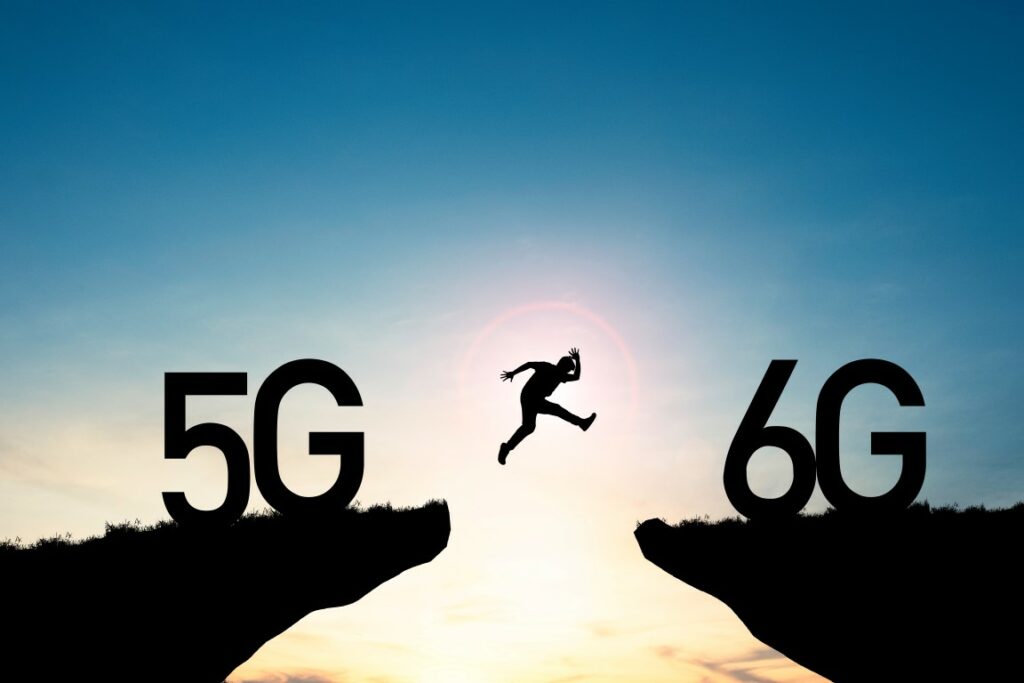Some of the world’s largest 5G equipment manufacturers have begun emphasizing “centimetric” spectrum bands — those between 7 GHz and 20 GHz – in their 6G presentations.
This is distinct from the early 5G interference that centered on millimeter wave (mmWave) frequency bands ranging from 24GHz to 40GHz. And this is a long cry from the initial 6G excitement, which centered on the terahertz (THz) frequency bands between 90GHz and 300GHz (or 0.3THz for those paying attention).

“Spectrum from within the 7-20 GHz range is essential to realize the capacity-demanding use cases in future 6G networks.”
Eliane Semaan, director of spectrum and technology regulation for infrastructure vendor Ericsson.
The company has just announced a significant investment in 6G research and development in the United Kingdom. Nokia additionally discusses centimetric spectrum for 6G.
“Ten years from now we expect new spectrum bands between 7 GHz and 20 GHz to open up for 6G use, which will provide the necessary bandwidth to create these new high-capacity carriers.”
Harri Holma and Harish Viswanathan, two top Nokia researchers.
The emphasis on centimetric bands is coincidental. Jessica Rosenworcel, chairwoman of the FCC – the US body responsible for managing spectrum – recently stated that she is considering the 12.7GHz to 13.25GHz spectrum band for the agency’s next major spectrum push.
Terahertz as ‘complementary’
As previously mentioned, the focus on spectrum ranges between 7GHz and 20GHz for 6G is a departure from early 6G prediction, which centered on terahertz regions over 90GHz. For instance, an early Samsung white paper on 6G suggested that it is “inevitable” that the terahertz bands from 100GHz to 10THz will be utilized by next-generation mobile networks. And Wind River once predicted that “6G will run on 100 GHz to 10 THz terahertz bands.”
However, the terahertz spectrum bands have much more severe propagation issues than the mmWave spectrum bands. In other words, transmissions in the THz bands may only go a few feet, whereas transmissions in the mmWave range may travel hundreds of feet.
This behavior in the THz ranges is not unexpected, though. Physically, signals travel farther in lower frequency bands. However, higher bands, such as the mmWave and THz bands, are enticing since they are largely unoccupied and can accommodate enormous volumes of data.
Due to poor penetration, the major 5G manufacturers currently view the THz bands as playing a supporting role in 6G as opposed to a leading one.
“We have thus identified new potential spectrum ranges for 6G, notably in the centimetric range from 7-15 GHz, which we believe will be an essential range, and in the sub-THz range from 92-300 GHz, which will have a complementary role serving niche scenarios. Our learnings from 5G are that the mmWave range is a powerful spectrum range which allows operators to provide value to industry and enterprise through high data rates. However, due to limited coverage, it serves as a complement to other ranges that can be used in wider areas but with limited data rates (i.e. mid bands). We believe that in order to benefit society, the majority of 6G use cases should be enabled for wide-area coverage, both indoors and outdoors, and not limited to confined areas. This means that – whilst we ought to explore the sub-THz region for entirely novel 6G capabilities – the main value will be in the centimetric 7-15 GHz.”
Ericsson’s chief researcher, Magnus Frodigh.
Learning from the past
Early discussions on 5G in the United States centered on mmWave and the potential of highband spectrum. Verizon, an early and vocal proponent of mmWave, focused a significant portion of its first 5G narrative on short-range wireless technology.
However, mmWave 5G failed to bring substantial improvements. Verizon abandoned its proposal to charge additional fees for its mmWave network. When midband spectrum in the 3GHz range became available in the United States, all cell companies in the country quickly shifted their focus to a midband-centric 5G initiative.
The entire scope of mmWave 5G’s challenges is only now becoming evident. South Korean regulators recently stated that operators in that nation were tasked in 2018 with constructing 7,500 mmWave basestations by 2021, but only met 10% of that goal.
“As a policymaker I express very strong regret for this outcome.”
Vice Minister Park Yun-kyu.
South Korea has long been regarded as a leading market for 5G innovation.
Consequently, it is evident that wireless network providers cannot rapidly build significant 5G networks in highband spectrum. Instead, companies must begin with low- and mid-band spectrum, which allows them to supplement high-traffic hotspots as needed with high-band networks.
It appears that the same events will play out in 6G.
Nokia’s Holma and Viswanathan highlighted that the bands between 7GHz and 20GHz constitute the “midband” of 6G. They explained that it will act as the “workhorse frequency of mobile networks.”
“Lower bands do not have sufficiently large bandwidth allocations to create the 400 MHz carriers needed for 6G. Meanwhile the harsh signal propagation conditions in the ultra-high frequency bands make it expensive to use them for wide area coverage. Midband spectrum [between 7 GHz and 20 GHz] is the sweet spot for simultaneously providing extreme capacity and competitive coverage.”
Harri Holma and Harish Viswanathan, two top Nokia researchers.
Source: Light Reading
































